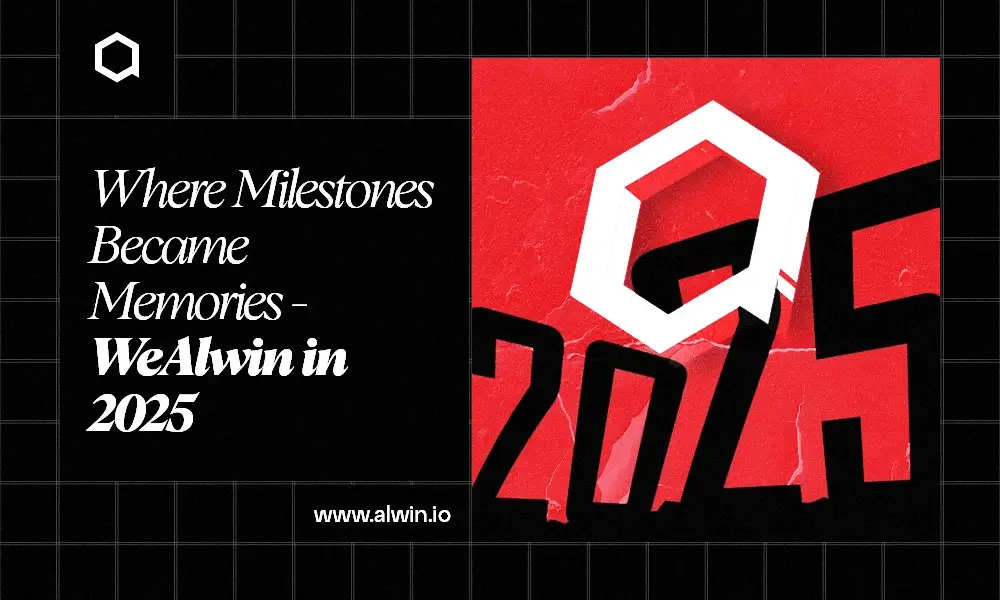Imagine: cryptocurrency exchanges will become interconnected hubs of digital finance in the future. Cross-chain compatibility and interoperability are making this a reality.
The use of these technologies will revolutionize the way we interact with blockchain technology, making transactions easier, faster, and more accessible. Imagine being able to seamlessly swap Bitcoin for Ethereum without needing a middleman. That's the potential of cross-chain compatibility, and it's only the beginning.
The Importance of Cross-Chain Compatibility
What is Cross-Chain Compatibility?
Cross-chain compatibility is a concept that's increasingly becoming a cornerstone in the blockchain universe. At its core, it refers to the ability of different blockchain networks to communicate and interact with each other without the need for intermediaries.
This means that assets and data can be transferred across diverse blockchains, paving the way for a more connected and accessible digital asset ecosystem. Think of it as the ability for someone on an iPhone to send a message to someone on an Android; it's all about making sure everyone can communicate, no matter what platform they're on.
Benefits of Cross-Chain Compatibility
The advantages of cross-chain compatibility are manifold. first and foremost, it significantly enhances liquidity, allowing users to more easily exchange assets across various platforms without the constraints of operating within a single blockchain.
Furthermore, it fosters innovation by making it easier for developers to combine features from different blockchains, creating new and improved solutions. Furthermore, it democratizes access to blockchain technology, ensuring that benefits are not confined to a single blockchain community but are available to a broader audience. These perks collectively contribute to the maturation and expansion of the blockchain ecosystem, making it more robust and versatile.
Cross-Chain Compatibility and Interoperability
What is Interoperability?
Interoperability in the blockchain context refers to the seamless interaction among different blockchain networks, enabling them to share, view, and access information and transactions across distinct platforms.
Essentially, it is the technical backbone that supports cross-chain compatibility, ensuring that despite the diversity in blockchain architectures, they can work together in harmony. This capability is crucial for realizing the full potential of blockchain technology, as it allows for a more inclusive and connected digital world.
Importance of Interoperability in Cryptocurrency Exchanges
Interoperability eliminates the barriers to trading across different blockchains, thereby expanding trading opportunities and improving user experience.
Users can enjoy a wide variety of assets within a single exchange, enhancing liquidity and potentially leading to better price discovery. Moreover, with the increased adoption of interoperable platforms, users can look forward to reduced transaction fees and faster processing times, further incentivizing participation in the cryptocurrency market.
Role of Cross-Chain Compatibility in Interoperability
Cross-chain compatibility is pivotal in achieving true interoperability among blockchains. By facilitating direct communication and asset transfer between diverse blockchain networks, it helps break down the siloes that have traditionally segregated the blockchain landscape.
This compatibility ensures that innovations on one platform can be leveraged across the board, creating a multiplier effect in terms of technological advancement and user friendly.
In essence, cross-chain compatibility acts as the bridge that connects scattered blockchain islands, enabling them to thrive together as a cohesive ecosystem.
Examples of Successful Cross-Chain Projects
Despite the hurdles, there are shining examples of cross-chain compatibility that inspire hope and excitement. Projects like Polkadot and Cosmos have been pioneers, offering frameworks that enable disparate blockchains to communicate and interact with each other.
These platforms not only facilitate the exchange of information and value but also maintain high levels of security and efficiency, showcasing what the future of blockchain technology could look like.
Impact of Cross-Chain Compatibility on the Future of Cryptocurrency Exchanges
Enhanced Liquidity and Trading Opportunities
One of the most significant impacts of cross-chain compatibility is the profound enhancement of liquidity and the broadening of trading opportunities across the cryptocurrency market.
By allowing assets to flow freely between various blockchains, traders can access a much larger pool of assets, leading to more vibrant and dynamic markets.
This liquidity is key to minimizing volatility and making cryptocurrencies more attractive to both retail and institutional investors.
Reduction in Transaction Times and Costs
Cross-chain compatibility also addresses one of the early criticisms of blockchain technology: high transaction times and costs. By streamlining the process of moving assets between blockchains, these advancements significantly reduce the need for intermediaries, slashing transaction times and fees.
This makes transactions not only faster but also more economical, benefiting everyone in the ecosystem.
Expansion of Use Cases and Adoption
Finally, increased interoperability and cross-chain functionality are set to dramatically expand the use cases for blockchain technology.
From decentralized finance (DeFi) to non-fungible tokens (NFTs) and beyond, the ability for different blockchains to interact seamlessly opens up a wealth of possibilities for innovation and application.
This expansion is a critical step toward mainstream adoption, making blockchain technology more accessible and applicable in various industries beyond the financial sector.
In summary, cross-chain compatibility isn't just a technical achievement; it's a gateway that leads to a more integrated, efficient, and inclusive future for cryptocurrency exchanges and blockchain technology as a whole.
Cross-chain interoperability protocols
Cross-chain interoperability protocols have become a crucial component in the blockchain ecosystem, enabling different blockchain networks to communicate and interact seamlessly with each other.
These protocols play a vital role in fostering collaboration, expanding use cases, and enhancing the overall efficiency of decentralized applications.
1. Layerzero
Layerzero is a cutting-edge cross-chain interoperability protocol that focuses on enabling seamless asset transfers and data exchange between various blockchain networks.
By leveraging advanced technology such as sidechains, Layerzero ensures fast and secure cross-chain transactions, enhancing the overall scalability and usability of decentralized applications.
The protocol's architecture allows for decentralized governance and incentivizes network participants to contribute to the interoperability ecosystem.
2. Wormhole
Wormhole, developed by the Solana team, is a robust cross-chain interoperability protocol that facilitates the transfer of assets and data between different blockchain networks, including Ethereum and Solana.
The protocol's token bridge mechanism ensures secure and efficient cross-chain transactions, opening up new possibilities for developers and users alike.
Wormhole's support for decentralized autonomous organizations (DAOs) and smart contracts further enhances its utility in the blockchain space.
3. Chainlink
Chainlink is a decentralized oracle network that plays a crucial role in enabling cross-chain communication by providing reliable and secure data feeds to smart contracts across different blockchain networks.
By integrating Chainlink's oracle solutions, developers can access real-world data on-chain, enabling the execution of complex cross-chain transactions.
Chainlink's extensive network of oracle nodes and focus on data privacy make it a trusted partner for projects seeking seamless interoperability.
4. Quant
Quant is a cross-chain interoperability protocol that aims to connect disparate blockchain networks through its Overledger technology.
By acting as a universal gateway, Quant enables seamless communication and asset transfers between different blockchains, fostering interoperability and collaboration.
The protocol's focus on security, scalability, and regulatory compliance positions it as a key player in the cross-chain interoperability space.
5. Flare
Flare is a decentralized network that facilitates trustless asset transfers and smart contract functionality across multiple blockchains. By utilizing the Flare Network's unique architecture, users can securely exchange assets and execute complex transactions across different chains.
The protocol's integration of the Ethereum Virtual Machine (EVM) compatibility opens up a wide range of possibilities for developers looking to build cross-chain applications.
6. THORChain
THORChain is an innovative cross-chain interoperability protocol that leverages advanced cryptographic techniques to enable secure and efficient asset transfers between blockchain networks.
The protocol's focus on privacy and scalability ensures that users can exchange assets across chains without compromising security or performance.
THORChain's decentralized governance model and commitment to open standards make it a promising solution for achieving seamless interoperability.
7. Zetachain:
Zetachain is a next-generation cross-chain interoperability protocol that aims to bridge the gap between different blockchain networks through its decentralized infrastructure.
By providing a secure and efficient mechanism for asset transfers and data exchange, Zetachain promotes seamless communication and collaboration across chains.
The protocol's emphasis on user privacy, decentralization, and scalability positions it as a key player in the evolving cross-chain interoperability landscape.
Cross-chain interoperability protocols such as Layerzero, Wormhole, Chainlink, Quant, Flare, Thorchsin, Zetachain, and others are revolutionizing the way blockchain networks interact and collaborate.
By enabling seamless asset transfers, data exchange, and smart contract functionality across different chains, these protocols are driving innovation and fostering a more interconnected and efficient blockchain ecosystem.
As the demand for cross-chain interoperability continues to grow, we can expect to see even more groundbreaking developments in this space, ultimately paving the way for a more decentralized and interconnected digital economy.
Case Studies: Successful Implementation of Cross-Chain Compatibility
The realm of cryptocurrency is witnessing an evolution, with cross-chain compatibility standing at the forefront. This concept is not just a theory anymore; several blockchain projects have successfully implemented cross-chain compatibility, and here's how they're doing it.
Ethereum and ERC-20 Tokens
Ethereum, a pioneer in blockchain technology, has played a significant role in promoting cross-chain compatibility through its ERC-20 tokens.
These tokens are unique because they follow a standard set of rules, allowing them to operate seamlessly across various Ethereum-based platforms.
This standardization has enabled developers to create interoperable applications, fostering a more connected and efficient ecosystem.
Polkadot and Interoperability
Polkadot takes the idea of interoperability to the next level by enabling different blockchains to communicate and share information without losing their unique properties. It operates as a multichain network, where various blockchains, referred to as "parachains," connect to a central relay chain.
This structure allows for the transfer of data and value between the connected blockchains, opening up a world of possibilities for interoperable applications and services.
Cosmos and Inter-Blockchain Communication Protocol
Cosmos is another testament to the power of cross-chain compatibility. It introduces the Inter-Blockchain Communication Protocol (IBC), allowing different blockchain networks to exchange data and tokens effortlessly. This capability breaks down the barriers between isolated blockchains, creating a more unified and scalable network.
Future Trends and Developments in Cross-Chain Compatibility
As we delve into the future, cross-chain compatibility is expected to shape the landscape of blockchain technology and cryptocurrency exchanges profoundly. Here are some trends and developments to watch out for.
Cross-Chain Bridges and Cross-Border Transactions
The emergence of cross-chain bridges is facilitating smoother and more efficient cross-border transactions. These bridges allow for the transfer of assets between different blockchain networks, reducing the need for intermediaries and lowering transaction costs. This innovation is set to redefine international trade and financial transactions.
Cross-Chain Decentralized Finance (DeFi)
The DeFi sector is poised for a significant transformation with the integration of cross-chain compatibility. By enabling liquidity and asset movement across various blockchains, DeFi platforms can offer a wider range of services and attract a broader audience. This interoperability is expected to drive innovation, making financial services more accessible and flexible.
Scalability and Cross-Chain Solutions
One of the most pressing challenges in the blockchain space is scalability. Fortunately, cross-chain solutions are emerging as a promising answer. By allowing different blockchain networks to connect and share resources, these solutions can significantly enhance transaction speeds and network capacity. As more projects adopt cross-chain technology, the scalability problem may become a thing of the past, unlocking new possibilities for blockchain applications and services.
As we look toward the horizon, the future of blockchain technology shines brightly, heavily influenced by the advancement of cross-chain compatibility. This feature not only enhances current exchanges but also sets the stage for a more inclusive and expansive digital financial market.



